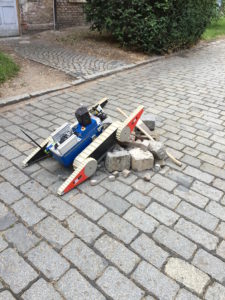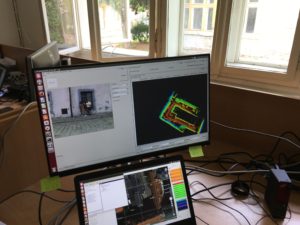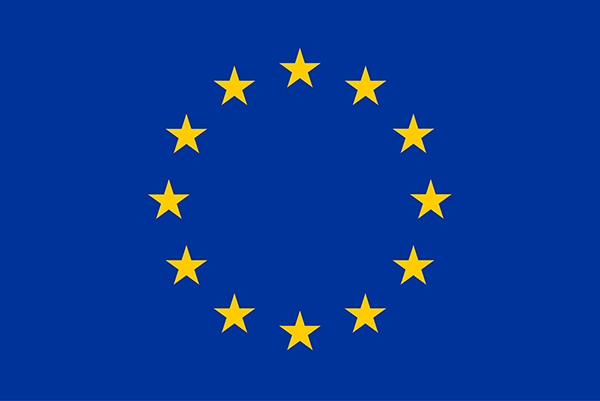
The TRADR Joint Exercise (T-JEx) 2016 took place in July 2016 in Prague, Czech Republic, organized by the TRADR partners in collaboration with end-users from firebrigades from Germany, Italy and the Netherlands. The location was the CTU campus. Over the course of a week a range of integration sessions, exercises and tests took place in order to integrate various functionalities developed by the TRADR partners, and assess the performance of the TRADR system.
This resulted in more integration of various components developed by partners, along with the successful deployment of some new features in a mission-like environment. Examples of these were e.g. autonomous navigation by UGVs based on local traversability map, the recording and building of maps in a first sortie, and subsequently loading and using this map for UGV navigation in following sorties. In addition, experience was gained in executing a mission with three UGVs at the teams disposal, which posed a considerable increase in complexity, also because of the increased functionalities that the UGVs were capable of.
Overall the exercise was very useful, as it enabled the team to test the aforementioned features outside of a lab-setting, thus marking an incremental step towards a more mature system.




